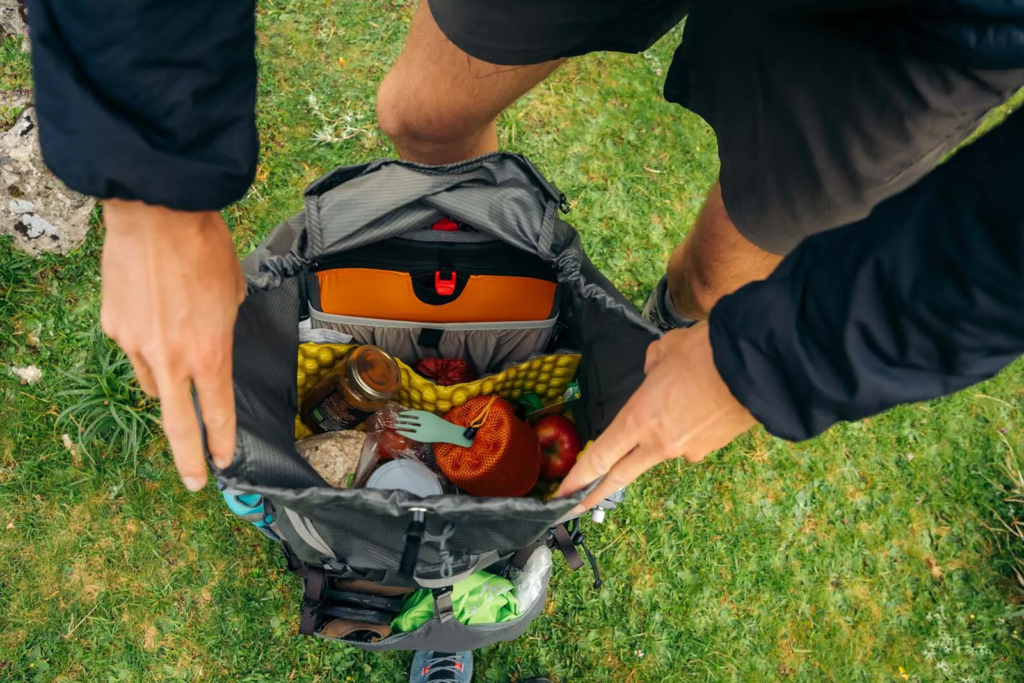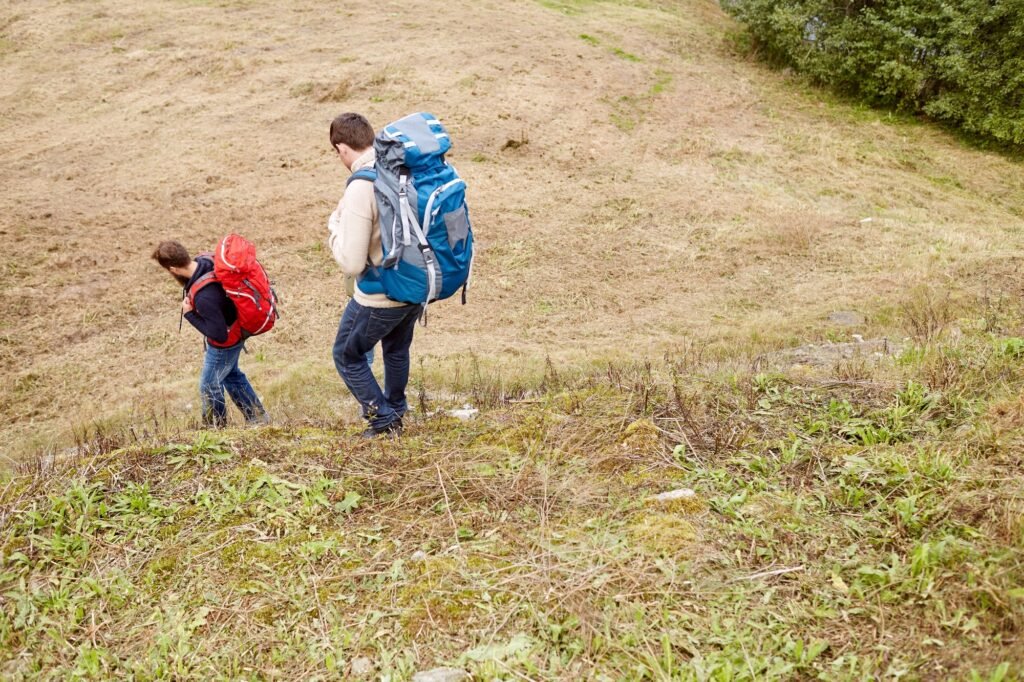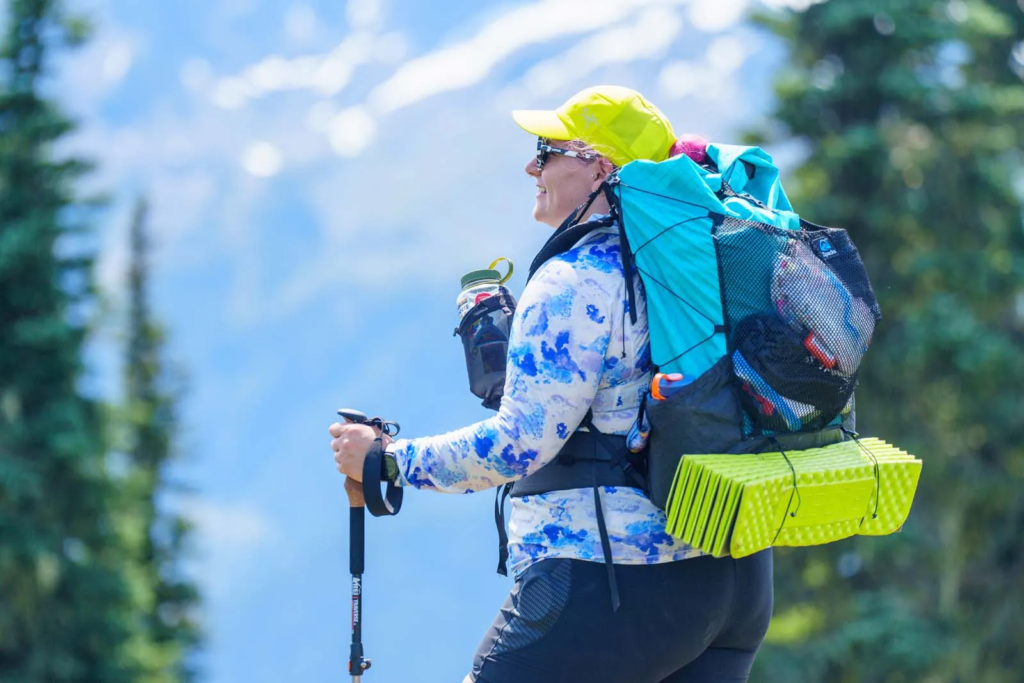During outdoor hiking, proper use and maintenance of the backpack can not only improve overall comfort, but also effectively protect the body and improve travel efficiency. A well-designed backpack can help you better cope with different terrains and weather conditions.
Packing tips for hiking backpacks
- Center of gravity principle
When packing, you should follow the center of gravity principle and place heavy objects close to the center of your back to maintain balance. This not only reduces the burden on your back, but also improves your stability while traveling. - Layered placement
- Bottom: Place sleeping bags and infrequently used items such as extra clothes or shoes.
- Middle: Store daily necessities such as clothes, food, and water.
- Top: Place commonly used items such as headlamps, maps, first aid kits, etc. for quick access.
- Utilize external space
- Side pockets: Used to store water bottles and snacks for easy energy replenishment at any time.
- Top pocket: Place small commonly used items such as mobile phones, wallets, etc.
- External hanging points: Used to carry large equipment such as trekking poles and ice axes.
- Compression Tips
Using compression bags can effectively reduce the volume of items and make the backpack more compact. Especially for clothes and sleeping bags, compression can save a lot of space.

The order of adjusting the backpack is very important
- Center of gravity adjustment belt: Adjust the center of gravity adjustment belt according to the terrain to maintain the best balance.
- Waist belt: Adjust the waist belt first to transfer most of the weight to the hips. Make sure the waist belt is close to the hips, but not too tight.
- Shoulder straps: Adjust the shoulder straps again so that the backpack is close to the back, but not too tight to avoid restricting blood flow.
- Chest strap: Finally adjust the chest strap and fix the shoulder straps to prevent sliding.
Carrying backpack method. Notes
- Bend over and lift: Avoid lifting the backpack directly with the back strength to avoid injury.
- Ask a companion for assistance: If the backpack is too heavy or you are not sure how to lift it, you can ask a companion for assistance.
- Adjustment during travel: Adjust the tightness of the shoulder straps at any time according to the terrain and physical condition to maintain comfort.

Precautions for using a hiking backpack
- Avoid overloading: This is the basic principle of using a backpack. Choose the right weight according to your ability and itinerary, and make sure the backpack does not exceed 25% of your body weight.
- Regular inspection: Check the condition of the backpack, including whether the straps, zippers, stitching, etc. are damaged. Avoid safety hazards.
- Keep it clean: Clean dirt and sweat stains in time to keep the appearance of the backpack clean and tidy and extend its service life.
- Moisture and mildew prevention: Dry in time after rain to avoid long-term water accumulation. Store in a ventilated and dry place to prevent mold growth. Use moisture-proof measures in humid environments.
Hiking backpack care and maintenance
- Cleaning methods
- Use a soft brush and neutral detergent: Avoid using strong chemicals.
- Avoid using a washing machine: Hand washing is safer.
- Rinse thoroughly: Make sure all detergent is removed.
- Storage methods
- Empty all items: Prevent odors and mold.
- Open all zippers and pockets: Allow for adequate ventilation.
- Avoid direct sunlight: Prevent fabric aging.
- Hang or lay flat: Keep the backpack in shape.

Backpacking in special situations
- Rainy days: Use a rain cover to protect your backpack and belongings. Use a waterproof bag or suit. Protect your electronic devices.
- Snow ground: Use snow cover to prevent snow from entering the backpack. Pay attention to anti-freeze and keep the backpack and items dry.
- Crossing the jungle: Protect your backpack from scratches by branches. Use waterproof and insect-proof measures to keep your backpack clean.
- Climbing: Choose a lightweight, compact climbing backpack. Use a harness or rope to secure your gear.
Summary
Proper use and maintenance of backpacks is a very important part of outdoor hiking. By following the above guidelines, you can not only improve your travel efficiency, but also ensure your safety and comfort. Remember to accumulate experience in practice and adjust your backpack usage strategy according to actual conditions.



